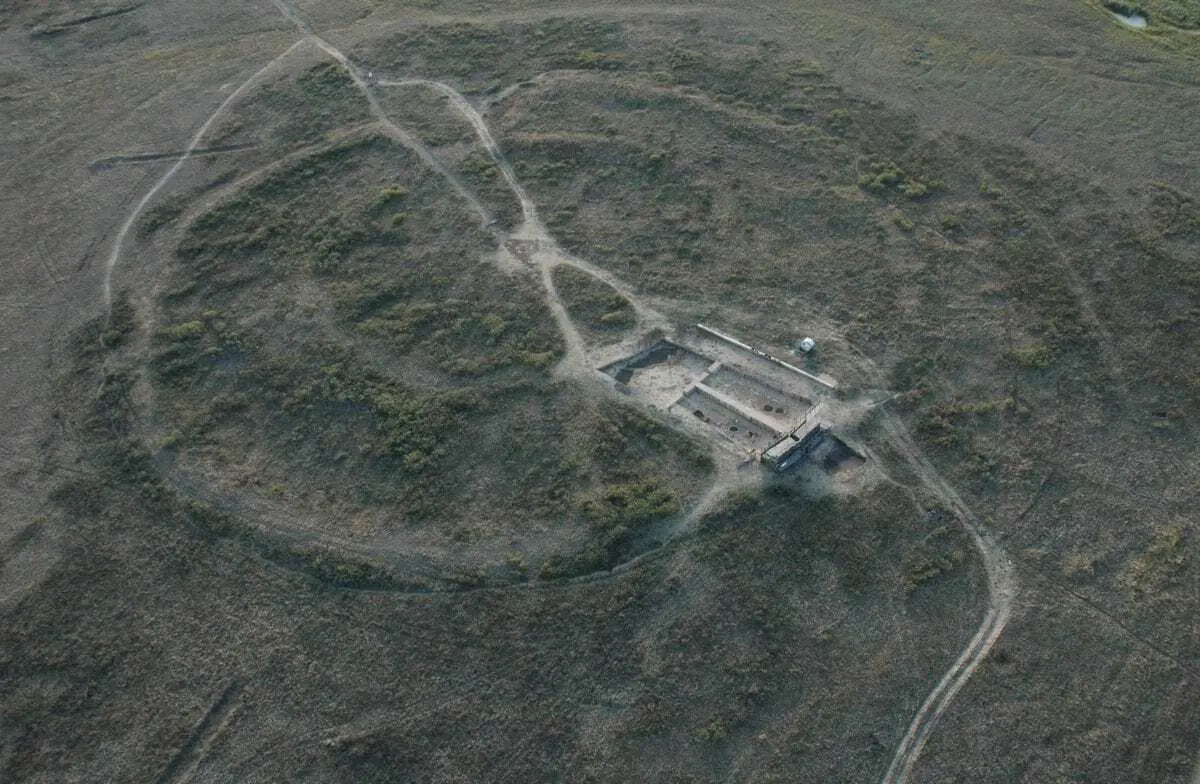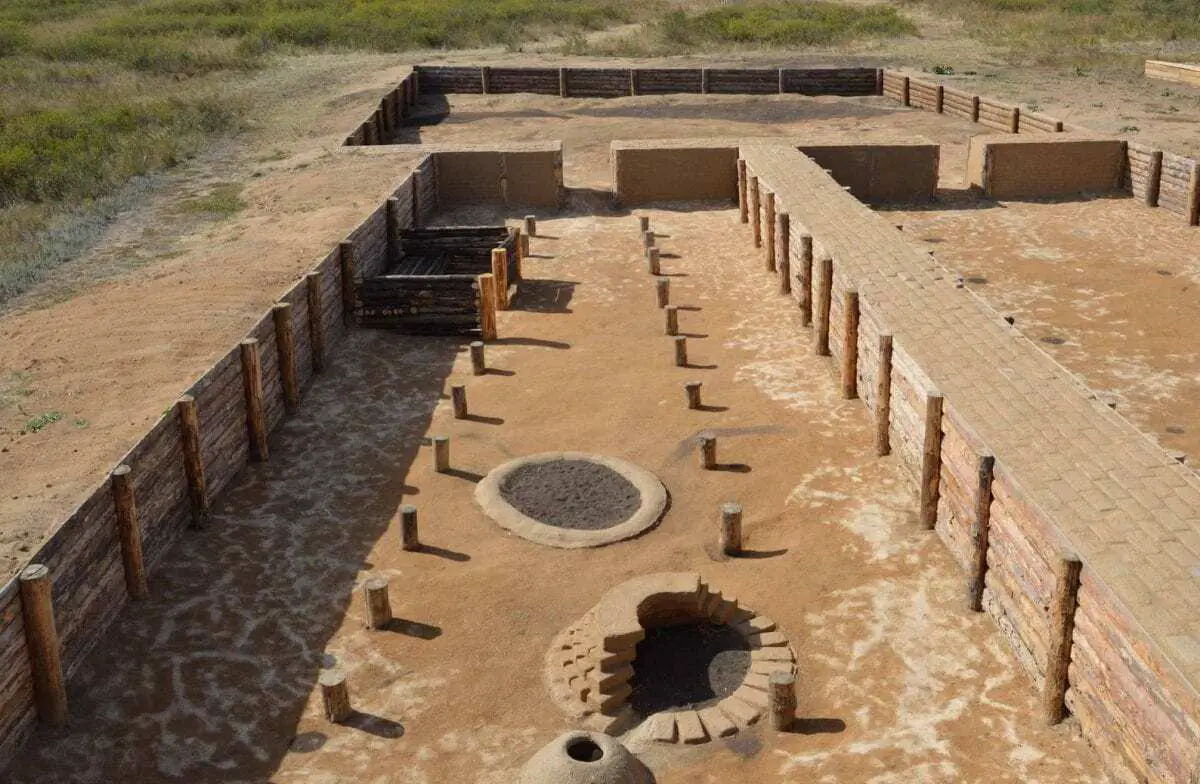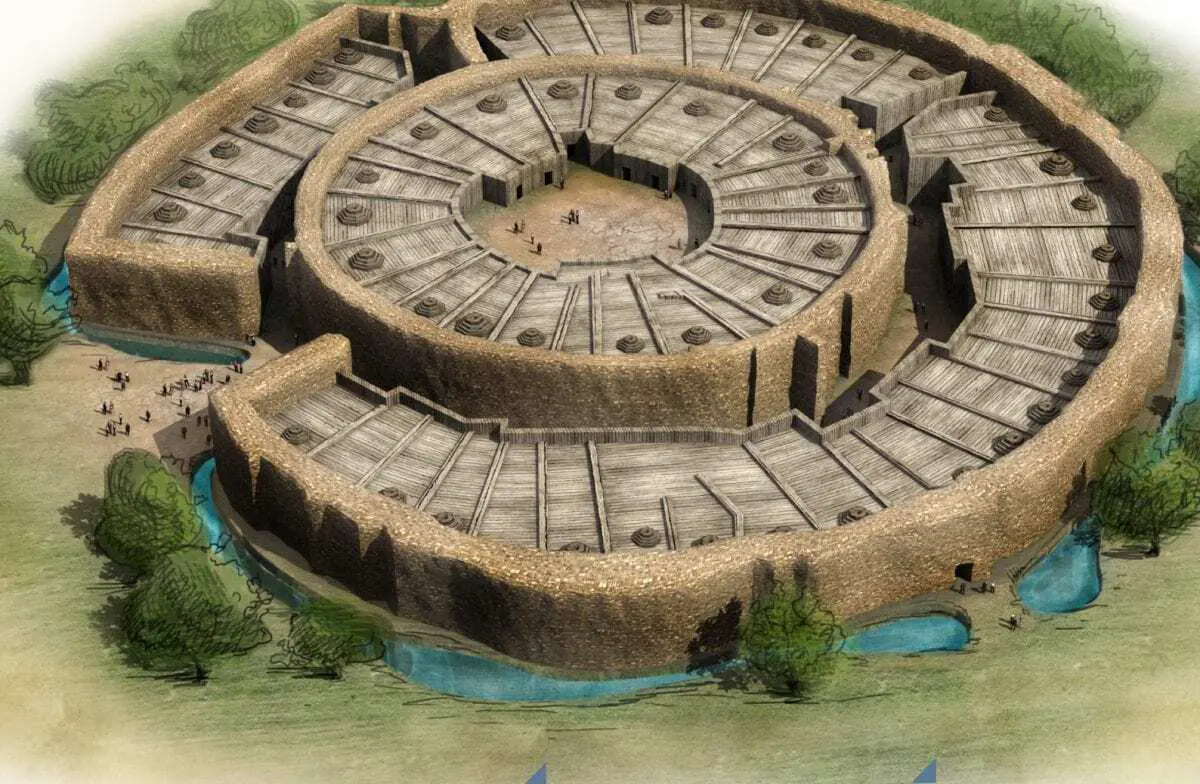Arkaim is an archaeological site on the steppe of the Southern Ural near the village of Amursky in Russia.
Arkaim consists of a fortified settlement from the Middle Bronze Age, constructed around 3.8-4000 years ago. Arkaim was a circular stronghold that housed 1,500 to 2,500 inhabitants with concentric bastions, constructed using adobe, a building material made from earth and organic materials.
The bastions, measuring 20,000 m² encircled the inhabitant’s dwellings that contained hearths, cellars, wells and even traces of metallurgical furnaces. Each dwelling opened onto a circular street paved with wood that was lined with drainage gutter pits for collecting rainwater. The whole complex centered on a rectangular open courtyard measuring 25×27 metres that was used for festivals and gatherings.

Arkaim is attributed to the early “hypothetical” Proto-Indo-Iranians who are assumed to have lived in the late 3rd millennium BC, and are often connected with the Sintashta culture of the Eurasian Steppe and the early Andronovo archaeological horizon.
Many scholars suggest the risky assumption that the concentric design represents “the model of the universe” as described in ancient Aryan/Iranian spiritual literature, the Vedas and the Avesta and reflect the city of King Yima (the fourth Shah of the Pishdadian dynasty of Persia according to Shahnameh) as described in the Rigveda (an ancient Indian collection of Vedic Sanskrit hymns).

Originally, seen as unusual circles in the Southern Urals steppe when photographed in 1952 by aerial cartographers, Arkaim wouldn’t be discovered until 1987 when a team of archaeologists, headed by Gennady Zdanovich was sent to survey the archaeological value of the valley at the confluence of the Bolshaya Karaganka and Utyaganka rivers in preparation for the construction of a reservoir. This would have resulted in the area being flooded and any archaeological remains submerged.
The team petitioned to protect the monument and mobilised public support, in April 1991 the Council of Ministers officially canceled the construction of the reservoir (in part due to the collapse of the Soviet Union) and declared Arkaim a “historical and geographical museum”.
More than twenty other structures built according to similar patterns have been found in a larger area spanning from the southern Urals’ region to the north of Kazakhstan, forming the so-called “Land of Towns”.
Header Image Credit :





